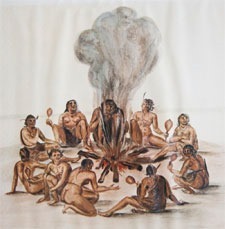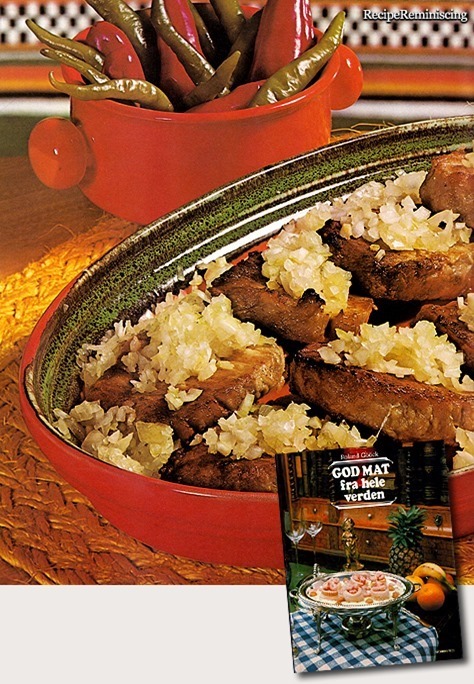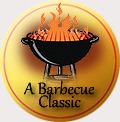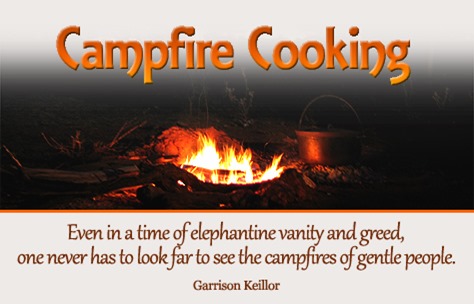Part of an article by Meathead Goldwyn posted on amazingribs.com
Contrary to mythology, barbecue was not an American invention. Barbecue is older than homo sapiens and anthropologists even think that it was mastery of fire that permanently altered our evolutionary path and it is this primeval link that makes us still love cooking over open flames.
Around one million years ago Homo erectus, the homonid just before Neanderthal man, first tasted cooked meat.
 Nobody knows for sure, but here’s how I think it happened: A tribe of these proto-humans were padding warily through the warm ashes of a forest fire following their noses to a particularly seductive scent. When they stumbled upon the charred carcass of a wild boar they squatted and poked their hands into its side. They sniffed their fragrant fingers, then licked the greasy digits. The magical blend of warm protein, molten fat, and unctuous collagen in roasted meat is a narcotic elixir and it addicted them on first bite. They became focused, obsessed with tugging and scraping the bones clean, moaning, and shaking their heads. The sensuous aromas made their nostrils smile and the fulsome flavors caused their mouths to weep. Before long mortals were making sacrifices and burnt offerings to their gods, certain the immortals would like to try their heavenly recipes.
Nobody knows for sure, but here’s how I think it happened: A tribe of these proto-humans were padding warily through the warm ashes of a forest fire following their noses to a particularly seductive scent. When they stumbled upon the charred carcass of a wild boar they squatted and poked their hands into its side. They sniffed their fragrant fingers, then licked the greasy digits. The magical blend of warm protein, molten fat, and unctuous collagen in roasted meat is a narcotic elixir and it addicted them on first bite. They became focused, obsessed with tugging and scraping the bones clean, moaning, and shaking their heads. The sensuous aromas made their nostrils smile and the fulsome flavors caused their mouths to weep. Before long mortals were making sacrifices and burnt offerings to their gods, certain the immortals would like to try their heavenly recipes.
Cooking makes it easier for animals to extract energy from food. That meant that there were more calories available for larger brains, which of course was an evolutionary advantage. It also took much much less time to eat, leaving time to hunt, socialize and form tribes and communities, and procreate.
Evolution favored traits that enhanced the ability of these early homonids to hunt and eat cooked meat: Smaller hips and flatter feet for running speed, better hand articulation, communication skills, and smaller jaws. Eventually they learned to domesticate dogs to help with the hunt, and then they learned to herd and husband the animals that tasted best. The family circle and tribal structure evolved so that men became hunters and women became cooks. Ergo, the first pitmasters were probably women.
 In 2007 Israeli scientists at University of Haifa uncovered evidence that early humans living in the area around Carmel, about 200,000 years ago were serious about barbecue. From bone and tool evidence, these early hunters preferred large mature animals and cuts of meat that had plenty of flesh on them. They left heads and hooves in the field. Three of their favorites were an ancestor of cattle, deer, and boars. From burn marks around the joints and scrape marks on the bones, there is evidence that these cave dwellers knew how to cook.
In 2007 Israeli scientists at University of Haifa uncovered evidence that early humans living in the area around Carmel, about 200,000 years ago were serious about barbecue. From bone and tool evidence, these early hunters preferred large mature animals and cuts of meat that had plenty of flesh on them. They left heads and hooves in the field. Three of their favorites were an ancestor of cattle, deer, and boars. From burn marks around the joints and scrape marks on the bones, there is evidence that these cave dwellers knew how to cook.
Early barbecue cooking implements will likely never be found because they were probably made of wood. The first meats were probably just tossed into a wood infereno.
They quickly learned that the food tasted better if the food was held above or to the side of the fire. According to barbecue historian Dr. Howard L. Taylor, the first cooking implements were almost certainly “a wooden fork or spit to hold the meat over the fire.
Eventually they built racks of green sticks to hold the food above the flames, and learned that the temperature was easier to regulate and the flavor better if the if they let the logs burn down to coals before the meat was put in place.
 Spit roasting is common around the world and for many years was the major barbecue cooking method. Baking an animal, vegetables, or bread in a hot pit in the ground was also an early development. Wooden frames were later used to hold meat over the fire, but they often held the meat well above the fire to keep the wood from burning, which resulted in the meat cooking slowly and absorbing smoke. The gridiron [similar to a grate on a modern grill] was developed soon after the Iron Age started, which led to grilling as we know it. Iliad, Book IX, Lines 205-235 and The Odyssey, Book III, lines 460-468 mention spits and five-pronged forks used to roast meat, basted with salt and wine at outdoor feasts in ancient Greece. Such feasts at the end of a battle or long march were common throughout history.” Below is a grill from the Stoö of Attalus Museum in Athens in a photo by Giovanni Dall’Orto. It is estimated to be from sometime between the 4th and 6th century BC.
Spit roasting is common around the world and for many years was the major barbecue cooking method. Baking an animal, vegetables, or bread in a hot pit in the ground was also an early development. Wooden frames were later used to hold meat over the fire, but they often held the meat well above the fire to keep the wood from burning, which resulted in the meat cooking slowly and absorbing smoke. The gridiron [similar to a grate on a modern grill] was developed soon after the Iron Age started, which led to grilling as we know it. Iliad, Book IX, Lines 205-235 and The Odyssey, Book III, lines 460-468 mention spits and five-pronged forks used to roast meat, basted with salt and wine at outdoor feasts in ancient Greece. Such feasts at the end of a battle or long march were common throughout history.” Below is a grill from the Stoö of Attalus Museum in Athens in a photo by Giovanni Dall’Orto. It is estimated to be from sometime between the 4th and 6th century BC.
 Smoked foods not only tasted swell, they kept longer. We now know this is because there are antimicrobial compounds in smoke, because smoke drove off flies, and because slow smoking dehydrated foods and bacteria need moisture to grow. In the days before refrigeration, smoking, drying, and salting meat were clever strategies for preserving perishable foods. This allowed hunting tribes to make a kill and, unlike other animals, they did not have to gorge themselves before the prey spoiled. If they were migratory, they could smoke, dry, and salt foods and take it on the road with them.
Smoked foods not only tasted swell, they kept longer. We now know this is because there are antimicrobial compounds in smoke, because smoke drove off flies, and because slow smoking dehydrated foods and bacteria need moisture to grow. In the days before refrigeration, smoking, drying, and salting meat were clever strategies for preserving perishable foods. This allowed hunting tribes to make a kill and, unlike other animals, they did not have to gorge themselves before the prey spoiled. If they were migratory, they could smoke, dry, and salt foods and take it on the road with them.


































